Tag Archives:recommendations

31
OctBooks Norwood Can’t Wait to Recommend
 Here in New England, daylight saving time ends at 2:00 am on Sunday, November 3, 2019. Before we turn in for the evening on Saturday, November 2, we will set our clocks back by one hour to “fall back.” While this will gain us some extra daylight in the morning, soon we’ll all likely be leaving our workday and walking out into nighttime. And while we’re still likely to get a few more warm sunny days, for most of us this is the time of year we start doing more indoor activities. Many of us bookworms look forward to cozying up with a pile of good books through the chill dark nights ahead.
Here in New England, daylight saving time ends at 2:00 am on Sunday, November 3, 2019. Before we turn in for the evening on Saturday, November 2, we will set our clocks back by one hour to “fall back.” While this will gain us some extra daylight in the morning, soon we’ll all likely be leaving our workday and walking out into nighttime. And while we’re still likely to get a few more warm sunny days, for most of us this is the time of year we start doing more indoor activities. Many of us bookworms look forward to cozying up with a pile of good books through the chill dark nights ahead.
As such, I thought this turning point in the year would be a perfect time to offer some recommendations for good books. But you don’t have to take my word for it; these recommendations come straight from other Norwood readers.
If you’ve played along with the Morrill Memorial Library’s Reader’s BINGO in the past few years, you may remember a BINGO square for “Book you can’t wait to recommend.” Here, now, are just a sampling of books other readers in your community can’t wait to recommend to you – yes, you! I hope you’ll find a few gems on this list to fuel your reading exploits this fall and winter. And yes, we will be playing BINGO again this winter; stay tuned!
- The Bear and the Nightingale, by Katherine Arden. Modern Russian fantasy novel and the first book in the Winternight trilogy.
- Beautiful Creatures, by Kami Garcia and Margie Stohl. Paranormal romance for young adults.
- Binti: Home, by Nnedi Okorafor. Science fiction with space travel and human-alien encounters; book 2 in the Binti series.
- The Breakdown, by B.A. Paris. Mystery of psychological suspense.
- Broken Angels, by Gemma Liviero. Historical fiction about different resistance stories against Nazi Germany.
- Carry On: the Rise and Fall of Simon Snow, by Rainbow Rowell. Fantasy fiction for young adults about a magical school.
- The Chemist, by Stephanie Meyer. Suspense fiction about women spies.
- Daring to Drive, by Manal al-Sharif. Nonfiction biography of a political activist woman who dared to drive in Saudi Arabia.
- The Devil, by Leo Tolstoy. Classic Russian fiction dealing with themes of mortality.
- Eat Dirt, by Josh Axe. Nonfiction about diet therapy and nutrition.
- Everybody’s Son, by Thrity Umrigar. Character-driven literary fiction about consequences, best intentions, moral crimes, and love.
- The Fireman, by Joe Hill. Horror novel about a strange epidemic of human combustion.
- Gemina: The Illuminae Files, by Amy Kaufman and Jay Kristoff. Interstellar science fiction for young readers; part of a series.
- The Hearts of Men, by Nicholas Butler. Novel about veterans, friendships, and coming of age.
- Inglorious Royal Marriages, by Leslie Carroll. Nonfiction history of scandalous marriages among royals.
- A Life in Parts, by Bryan Cranston. Autobiography of the popular actor.
- Other-Wordly, by Yee-Lum Mak. Charming nonfiction graphic novel about unique words.
- The Picture of Dorian Gray, by Oscar Wilde. Classic fiction about philosophy, one’s true character, and hedonism.
- The Pursuit, by Janet Evanovich. Adventure and suspense spy novel; book 5 in the Fox and O’Hare series.
- Quiet: The Power of Introverts in a World that Can’t Stop Talking, by Susan Cain. Nonfiction about introverts, extroverts, and how to be.
- The Rise and Fall of D.O.D.O., by Neal Stephensen and Nicole Galland. Sci-fi/fantasy with time travel, magic, and technology.
- Seven Stones to Stand or Fall, by Diana Gabaldon. A collection of short fiction from the world of the historical fantasy Outlander novels series.
- Still Alice, by Lisa Genova. Modern literary fiction addressing Alzheimer’s Disease.
- What is the What, by Dave Eggers. Biographical work of fiction about Sudanese refugees.
- Wives of War, by Soraya Lane. Historical fiction about the friendship between nurses in World War II.
- The Women in the Castle, by Jessica Shattuck. Historical fiction about the experiences of three widows in Europe in World War II.
- You Can’t Touch My Hair, by Phoebe Robinson. Humorous biographical essays by comedian, Phoebe Robinson.
Liz Reed is the Adult Services Librarian at the Morrill Memorial Library in Norwood MA. Look for her article in the October 31st issue of the Transcript and Bulletin.
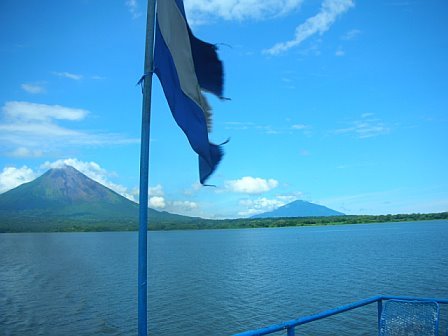
7
MarSunbathing in Haiti, Surfing in Nicaragua
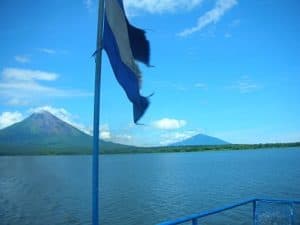 It was the summer of 2010 – one of my all-time favorite travel memories. A small rowboat carried me and my friend to a pristine beach cove, as beautiful as any postcard from a tropical paradise anywhere in the world. We had the entire palm-lined shore to ourselves, to sunbathe, look for shells, and swim in calm tepid water. At some point a man with a sack of fresh mangoes rowed up to the cove and sold some to us for about ten cents each, then rowed along to his next stop. The day couldn’t have been more perfect after an exhausting week of hard work and heartbreak. I should mention, we were in Haiti, six months after the devastating earthquake of 2010.
It was the summer of 2010 – one of my all-time favorite travel memories. A small rowboat carried me and my friend to a pristine beach cove, as beautiful as any postcard from a tropical paradise anywhere in the world. We had the entire palm-lined shore to ourselves, to sunbathe, look for shells, and swim in calm tepid water. At some point a man with a sack of fresh mangoes rowed up to the cove and sold some to us for about ten cents each, then rowed along to his next stop. The day couldn’t have been more perfect after an exhausting week of hard work and heartbreak. I should mention, we were in Haiti, six months after the devastating earthquake of 2010.
The earthquake measured 7 on the Richter scale and devastated a country already described as the poorest in our hemisphere. News cycles broadcast collapsed buildings, rescue efforts, then the raising of tent camps and influx of donations. Reporters spouted numbers on who promised how much aid money, which countries responded most honorably, and which NGOs warranted donations.
I wanted to see Haiti with my own eyes once travel re-opened for regular folks like me, as opposed to journalists and medical teams. Amy Bracken, a long-time reporter and radio producer specializing in Haiti, connected us with locals and provided tips for our potentially ill-conceived venture. The destruction proved worse and farther-reaching than I’d ever imagined, but I documented it with photos, and learned about Haiti from Haitians themselves. We ended up helping a group of locals clear the rubble of their collapsed three-story church by hand. The trip moved and changed me; the beach retreat was a bonus. The best (albeit minor) thing we did to “help” Haiti was to visit, learn, and put some tourist dollars into the local economy.
Flashback to spring of 2006 – another favorite travel memory. We lounged on hammocks surrounded by flowers all colors of the rainbow, watching exotic butterflies flutter by. It seemed as though each took its turn hovering over us, like a supermodel on a runway, then darted away making room for the next in line. My friend and I walked to the beach on a calm lake, and again, had the place to ourselves, aside from three horses who meandered down to sip some fresh lake water, then sleep on the sand. This happened on Ometepe Island, Nicaragua.
After that trip I returned to Nicaragua year after year, and started contemplating retiring there some day. I led groups of students to work on humanitarian projects such as building water filters, and helping out on a bookmobile. In-between work assignments we made excursions to some of the best surfing beaches in the Americas and zip-lining courses among howler monkeys, distributing our fair share of currency among the local businesses. I made connections with U.S.-based non-profits: the Newton/San Juan del Sur Sister City Project (on whose board I served for a decade), and the Hester Hodgdon Libraries for All Foundation, which partnered with my library-school alma mater, Simmons College. The true heroes I grew to know and admire were local leaders – the Nicaraguan organizers and activists who ran programs bettering their own communities, who called the shots and whose direction we followed.
During those years I fielded many calls by concerned parents of students, reluctant to allow their children to travel to a “war-torn” “third world” country. Understandably, they associated Nicaragua with the Iran-Contra scandal, the war between the Sandinistas and Reagan-backed Contras, Ollie North, and the Cold War threat of a Latin American revolution too close to home. Truth be told, we met dozens of locals who lived through those dark days and shared stories from their own memories, unfiltered by the news media, and students learned more than they could have from textbooks. When my own family expressed concerns over my choice of a second home, I assured them I felt safer on the Nicaraguan coast than at home in Boston, where I lived at the time amid the dangers of gang violence, break-ins and muggings.
Haiti and Nicaragua memories keep coming back to me lately as I anticipate two upcoming programs at the library. Haiti: Then and Now will feature journalist Amy Bracken, to discuss the country before the earthquake, in its immediate aftermath, and the state of things today. Nicaragua: Then and Now will include Dr. David Gullette, President of the Newton/San Juan del Sur Sister City Project, who has gone to Nicaragua every year since 1988, and offers expertise on the country’s history from the Sandinista revolution through the present day, including over 300 recent deaths of protesters. I plan to join both presenters to chime in as a tourist to these unlikely locales, and to advocate for the transformative experience of setting fear and assumptions aside to travel “off the beaten path.”
To learn more about Haiti and Nicaragua, please attend the following programs, or enjoy these recommendations:
Haiti: Then and Now, Morrill Memorial Library, March 11, 2019, 6:30-7:30 pm
Nicaragua: Then and Now, Morrill Memorial Library, April 22, 2019, 6:30-7:30 pm
The Country Under My Skin: A Memoir of Love and War, by Giaconda Belli
Collapse: How Societies Choose to Fail or Succeed, (Chapter 11), by Jared Diamond
John Pilger’s film, Nicaragua: A Nation’s Right to Survive
The Big Truck That Went By: How the World Came to Save Haiti and Left Behind a Disaster, by Jonathan Katz
Lydia Sampson is the Technical Services Department Head at the Morrill Memorial Library in Norwood, MA. Look for her article in the March 7, 2019 issue of the Norwood Transcript.
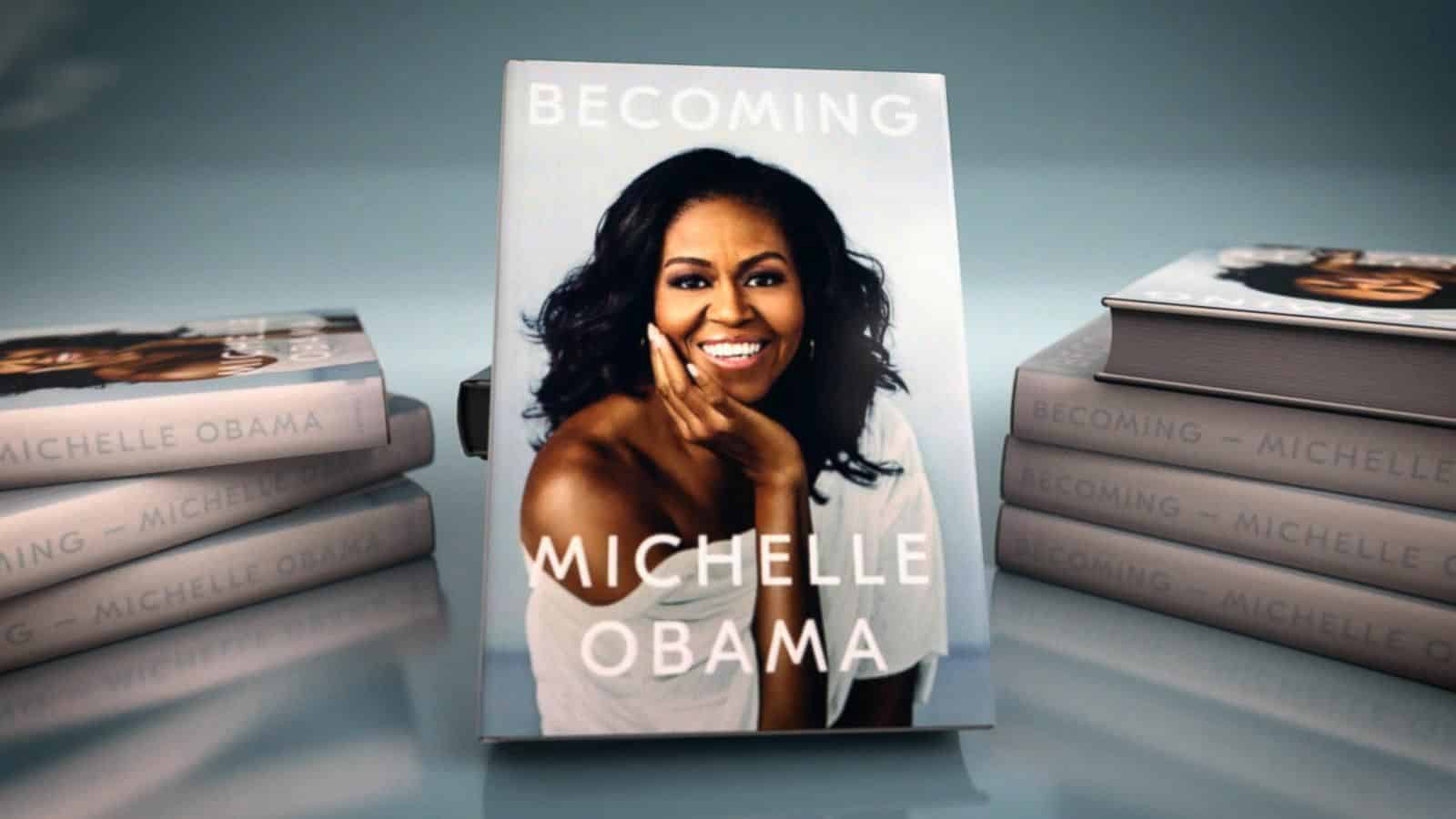
3
JanBest Books This Christmas
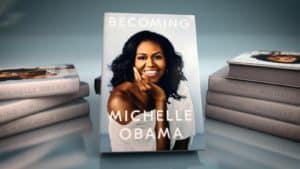 As a young girl, one of my preferred gifts at Christmas was a book. Classics like Heidi, Five Little Peppers, Swiss Family Robinson, and Little Women remain some of my most cherished possessions. I’ve always surrounded myself and my family with books and literally poured books into my children’s hands, overflowing the bookshelves in our home.
As a young girl, one of my preferred gifts at Christmas was a book. Classics like Heidi, Five Little Peppers, Swiss Family Robinson, and Little Women remain some of my most cherished possessions. I’ve always surrounded myself and my family with books and literally poured books into my children’s hands, overflowing the bookshelves in our home.
We all know librarians fancy books. More than that though, it takes reverence for books to pursue a profession about them. Yet, libraries are evolving places where exciting programs and marvelous things are becoming more and more relevant to a library’s mission. The field is attracting young professionals who are, in addition to clever researchers and keen readers, excited about technology, music, and social synergy.
Not surprisingly, librarians don’t have the corner on book-loving. My family of children and their spouses – educators, graphic designers, marketing gurus – all worship books. Family times always see at least one or two of the adults curled up in a nook – often with a book discovered on one of our many shelves. Our grandchildren held their first books as infants – small cloth or chunky board books were wedged into their strollers and car seats. Their own collections grew until their favorite crawling or toddling activity was swiping them all off the shelf into a heap. They always reached for their favorites: Barnyard Dance by Sandra Boynton, The Very Hungry Caterpillar by Eric Carle, or Brown Bear, Brown Bear, What Do You See? by Bill Martin. Most parents (and grandparents,alike) can recite the words by heart through closed eyelids until they open them to turn back to the first page. “Again?” And again. And again.
This year, I bought multiple copies of my two favorite 2018 books as presents for my children and friends. One is The Library Book by Susan Orlean. While I had listened to the audio version, I took out our library’s speed read copy so that I could hold the lovely book in my hand, stroking the cloth cover (no jacket) and flipping through the few illustrations. The back inside cover depicts a library book pocket and date due card. It’s so realistic that you can’t resist touching it with your fingers to find that it is only a photographic image.
The Library Book tells the story of the massive fire that burned in the Los Angeles Public Library on April 29, 1986. The mysterious blaze, officially determined to be arson, destroyed 400,000 books and damaged another 600-700,000 more. It burned for seven hours and was fought by over 350 firefighters from 60 firefighting companies. Fortunately, all 400 visitors and staff in the library at the time of the fire were evacuated. Heat swelled to over 2,000 degrees within the concrete walls and firefighters worked to cut 18 holes in the building to release the smoke and heat, thereby decreasing the temperature.
In 1986 the fire hadn’t received much attention. Chernobyl was the talk of the day that captured the media’s attention. More than 30 years later, the story unfolded through Orleans. Susan Orlean is a passionate author who began her research accidentally when she toured the Los Angeles Public Library and heard that some of the books still smelled of smoke. That smoking gun, so to speak, led to research.
The account in The Library Book is so much more than just the fire. It incorporates a history of the city library and a 1921 effort to finally build a respectable library in a sun-drenched, fantastical place named “The City of Angels.” The story includes interesting characterizations of its first and current librarians. In addition, Susan Orlean describes the notable and remarkable attempts to destroy books and libraries throughout world history. She includes the accomplishment of rebuilding the main library in the 1990s.
I gave copies of my other favorite 2018 book, Becoming by Michelle Obama, to my daughters. While it is principally an autobiography of the life of the “first” African American First Lady, it is most significantly a book about a capable woman who learned to navigate her responsibilities as a young girl and young woman, a mother, and a wife. All of our daughters and daughters-in-law are professionals, wives, and mothers and we watch them in awe as they balance all aspects of their lives. Obama’s act is one to follow and includes some of the immeasurable advice they will read.
Our grandchildren all received books, as they usually do for their birthdays, Christmas, and any other chance I have. It was our granddaughter Maeve’s book, the 75th anniversary edition of the Complete Adventures of Curious George (2016), that created the best reading adventure of 2018. While Maeve has copies of the Curious George Around Town books that she fell in love with earlier this year, I wanted to give her a copy of the seven original Curious George stories in one hefty volume. And hefty it is at 3.4 pounds.
There is debate about Curious George. Some feel (my ex-husband among them) that Curious George is obnoxiously curious and never has to suffer the consequences of his misbehavior. Others simply believe that Curious George is a good little monkey at heart who topples again and again into trouble. My ex-husband refused to read Curious George to any of my daughters; I suspect this might be why it warms my heart and tickles my fancy that my granddaughter Maeve can’t get enough of George!
The Complete Adventures actually includes only seven Curious George stories, but they are the originals published between 1941 and 1966, and written and illustrated by H.A. Rey and his wife, Margret. Our very own Curious George Christmas adventures included at least ten readings of Curious George Goes to the Hospital and Curious George Rides a Bike. Other stories in the book are Curious George Takes a Job and the original story, naturally named Curious George. “This is George. George was a good little monkey, but he was always curious.”
If you are a little bit curious, it’s not too late in the first weeks of 2019 to read some of my favorite gift books from 2018.
Charlotte Canelli is the Director of the Morrill Memorial Library in Norwood, Massachusetts. Read Charlotte’s column in the January 3rd edition of the Norwood Transcript and Bulletin.
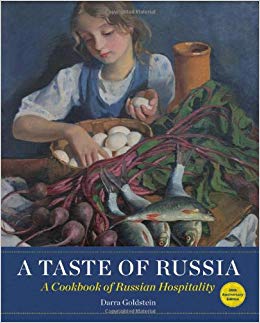
23
AugBinging on Great British Baking and Russian Pastry
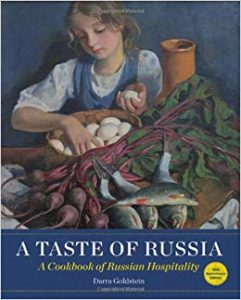 Gerry and I binge-watched at least four seasons of the Great British Baking Show this summer. It had been recommended and once I started binging and proselytizing about my new-found crush, I realized that, as with most other hit series, I was years late to the party. Especially this British one.
Gerry and I binge-watched at least four seasons of the Great British Baking Show this summer. It had been recommended and once I started binging and proselytizing about my new-found crush, I realized that, as with most other hit series, I was years late to the party. Especially this British one.
During one particular B-A-A-A-A-K-E which happened to be pastries, I thought of the favorite savory pastry that had captured my fancy over 25 years ago. It was the kulebiaka (or coulibiac) – a time-consuming Russian first course. The kulebiaka boasts a flaky, buttery pastry that envelopes a filling of either cabbage and chopped hardboiled eggs or salmon, rice and dill. My finished kulebiaka’s crust is garnished with leaves and a rope closure and rises and bakes to golden perfection.
Once sliced and served with sour cream, it is always met with ooohs and aaaahs across the room. Anton Chekhov wrote in his short story The Siren that “the kulebiaka must make your mouth water; it must lie there before you, a shameless temptation! You cut off a sizable slice and let your fingers play over it. When you bite into it, the butter drips from it like tears.”
I fantasized, recently of course, that Paul Hollywood would have swooned over one of my masterpieces, the kulebiaka. I might have had a handshake.
Long before I was awarded my master’s degree in library science (or MLS) from Boston’s Simmons College, I had returned to college in the late 1980s as an undergraduate. Years earlier I had left behind three years of academic work in History and Political Science at a California university to begin raising my family. A requirement for completing my degree with distinction from a Massachusetts state college was that I must complete more than half of the total required credits (120) at a Massachusetts school. Doing the easy math, I need to complete 150 total credits instead of the normal 120 for a bachelor’s degree. Lucky for me, I had more curiosity than 120 credits anyway.
My favorite courses that second time around were in Russian Studies, which of course fell right smack within my favorite academic areas of interest: history, literature and political science. For a minor in Russian Studies I was also required to take at least a year of Russian language and I memorized the Cyrillic alphabet forwards and backwards. My studies included a tour to the Soviet Union in 1990, a year before my hero USSR President Mikhail Gorbachev’s policies of glasnost and perestroika helped to dismantle the Soviet Union and communism.
My interest in Russia started many years before… as a very young child. Moving to Berkeley, California at the age of six, my family rented an apartment in a big house just three houses from my new elementary school. Our absent landlady was a large, hardy and hearty block of a Russian woman who was missing most of her right arm. Her infrequent visits, her Russian accent, and her exotic right arm fascinated me. That curiosity led me to other things Russian in my youth, including a book I read my senior year in high school, We the Living by Ayn Rand. It is one I credit with many influences in my life. The young, female protagonist in the book is named Kira. It was years later, after naming my youngest daughter with the Irish version of that name (Ciara and pronounced exactly the same), when I realized just how influential the book had been.
Returning from the study tour in the Soviet Union in 1990, I took up Russian cooking with an energetic passion. My graduation party from college in 1991 was a huge affair with over a hundred friends and family feasting on Russian food and drink. I enlisted the help of some of those friends who cooked and baked with me all week. I rented tables for the backyard and placed centerpieces of pitchers of lilacs, all donated from another friend’s garden. I hired a young Russian man named Sasha who appeared dressed in traditional Slavic costume. He spent the afternoon roaming the yard with his balalaika and entertaining the crowd with lovely Russian folk music. In addition, I contracted a slick-suited pianist named Vladimir who played music by Russian composers on the piano in my living room. It was a tremendously wonderful party and I smile again remembering it nearly three decades later.
So, following that pastry episode on the GBBS, I searched for my recipe books and came across some of my old favorites on my bookshelves, A La Russe: A Cookbook of Russian Hospitality by Darra Goldstein and the Art of Russian Cuisine by Anne Volokh. The copy of my favorite book, Russian Cooking, part of the Time-Life Cooking of the World Series I had collected in the 70s as a young wife, was missing. That book was the one from which I’d learned exactly how to assemble the kulebiaka, using the photographs over a two-page spread. To my surprise, not one of the Minuteman Libraries had a copy. Thankfully, I found over a dozen copies of Russian Cooking listed in the Massachusetts’ Commonwealth Catalog (or ComCat.) Although I could have requested one through Massachusetts library delivery, I eventually unearthed my own copy. I discovered the very worn and stained spiral-bound book of recipes and the accompanying hardcover in my basement, mixed in with a few other castaways.
Searching the library catalog, I found a more recent copy of Darra Goldstein’s book (published in 2013 as A Taste of Russia and I’ve added to our collection.) Her book is rich with recipes for Marinated Mushrooms, Baked Apple Charlotte, Baba au Rhum, and Siberian Dumplings. The recipe for Apricot Tart is one I memorized 25 years ago and use over and over again. Anne Volikh’s Art of Russian Cuisine is no longer in print, but several libraries have it on their shelves. She also includes a page of drawings illustrating assembly of the Kulebiaka and recipes from across the huge Russian and Soviet empires. Our library has a copy of Please to the Table by Anya von Kremen that includes recipes across the fifteen former republics of the Soviet Union.
If you’d like to learn the art and passion of Russian cooking, like the famed kulebiaka, there are many books in the Minuteman Library Network and across Massachusetts through ComCat. Or watch every episode of the Great British Baking Show and save those calories.
Charlotte Canelli is the Director of the Morrill Memorial Library in Norwood, Massachusetts. Read Charlotte’s column in the August 23, 2018 edition of the Norwood Transcript and Bulletin.

9
AugIt Takes a Stretch
 You must have a favorite author. Someone you turn to when the rest of the world seems in chaos. Someone who is as comfortable to be with as your warm fuzzy slippers and a chair beside the fireplace. Perhaps it is Jamie Ford or Susan Meissner (two of my favorites) whose lyrical stories carry you back in time and make you fall in love with their characters. Or maybe you are addicted to Mary Higgins Clark or Louise Penny, and you cannot wait to settle down with their latest creations in your hands.
You must have a favorite author. Someone you turn to when the rest of the world seems in chaos. Someone who is as comfortable to be with as your warm fuzzy slippers and a chair beside the fireplace. Perhaps it is Jamie Ford or Susan Meissner (two of my favorites) whose lyrical stories carry you back in time and make you fall in love with their characters. Or maybe you are addicted to Mary Higgins Clark or Louise Penny, and you cannot wait to settle down with their latest creations in your hands.
While there is something magical and wonderful about those treasured authors, there is also something to be said for those books that you never ever thought you would read, and suddenly you do. Perhaps you’ve been astonished when your world expands after being stretched by a story or concept that greeted you when you dared to open a book that wasn’t part of your regular repertoire.
Every month I lead between four or five book clubs. I know! I should have my head examined. Still, I enjoy each and every one of them. When I started these groups, I surveyed my readers to see what type of books they loved to read. Many of them preferred mysteries. Hands down! Ironically, it is a rare month now when I select a mystery for a book club read. When it comes to this genre, I find there isn’t a lot to talk about in a group. Trust me, I’ve tried. Once you know “who done it,” the conversation tends to be a bit sparse. So I decided to choose a wide range of books and topics instead. And yes, I like to stretch my readers. Actually, I like to stretch myself, too. Sometimes this means I pick a total flop. This doesn’t bother me, though. We’ve had the most engaging conversations even when the book choice is a bust.
An example of this happened recently. The Spy Wore Red by Aline, Countess of the Romanones was a big hit with my book clubs. Everyone loved the suspense in this true life story of a World War II spy. With this success behind me, I decided a similar read entitled A Spy Among Friends by Ben Macintyre was appropriate. Boy, was I wrong. This was the story of a friendship between two spies, Kim Philby and Nicholas Elliott, and the years that Philby deceived both MI6 and the CIA. While we had a lot to discuss, the style of writing was rather dry for most of my readers. Nevertheless, we learned a lot about the circle of Cambridge University friends that the British intelligence recruited. Certainly, our minds were stretched.
Over the years my book clubbers have read a variety of genres that they might not have tried on their own. While we covered classics like Rebecca by Daphne Du Maurier and A Tree Grows in Brooklyn by Margaret Smith, we have also tried a western or two like True Grit by Charles Portis and post-apocalyptic science fiction like Station Eleven by Emily St. John Mandel. On occasion we jumped into young readers like Skating With the Statue of Liberty by Susan Lynn Meyer or The Book Thief by Markus Zusak. Why? Why not! Challenge accepted.
If you’re willing to stretch your definition of “good reads,” you might be drawn into another reader’s obsessions as well. I have a coworker who loves books about cats, any and all cats. Who am I kidding? I’m surrounded by coworkers who read cat books. To be honest, felines don’t always tickle my fancy as characters but, lo and behold, I found myself swept into a picture book called Caramba by Marie-Louise Gay when I saw it on my coworker’s desk. Now I’m addicted. I’m hoping Caramba, the cat who can’t fly, has many more stories to discover.
Likewise my husband has certain topics that fascinate him and I’m not sure if there’s any rhyme or reason for them. For a while Appalachian history captured his interest. For several nights in a row I fell asleep as he read out loud Night Comes to the Cumberlands by Harry M. Caudill. Soon I became intrigued by Appalachia as well. When Hillbilly Elegy by J.D. Vance was hot off the press, I raced to get a copy. Later, when my husband’s curiosity shifted to the topic of North Korea, I followed suit. A Thousand Miles to Freedom by Eunsun Kim and North Korea Undercover by John Sweeney are two books I would never have touched without my husband’s influence. It seems that other people’s obsessions are catchy.
Truth be told, I enjoy being stretched. I bet you do too! In the words of Charles Scribner, “Reading is a means of thinking with another person’s mind; it forces you to stretch your own.” The only problem is finding enough time to fit it all in. I’d highly recommend trying something completely new. You might even win a prize if you take the opportunity to fill out our Summer Reader’s Bingo in the process. Consider some of the categories: “A Book With a Beach Setting,” “A Book Set in Winter,” or “A Book With a Food Theme.” Go ahead… give it a chance. What have you got to lose?
Nancy Ling is the Outreach Librarian at the Morrill Memorial Library in Norwood, Massachusetts. Read Nancy’s column in the August 9th issue of the Norwood Transcript and Bulletin.
